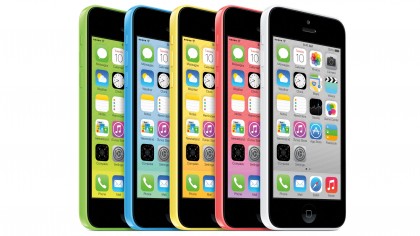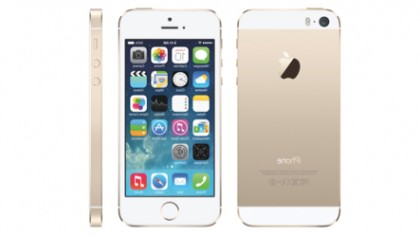iPhone 5S vs iPhone 5C
Our in-depth comparison of Apple's two handsets
Loading Sonic Dash on the iPhone 5C was considerably slower than the 5S; we had already started gaming on the 5S by the time the load screen had disappeared on the 5C. Anybody with the 5C won't feel too let down by their handset, until a 5S-toting friend turns up.
Taking it down to brass tacks, and in the benchmark testing you can see that the 5S is streets ahead of its cheaper rival, scoring 2557 in real world testing compared to the 1282 of the 5C. This won't matter if you're only going to be idly checking web and email, but over time you'll likely yearn for a little more power.
Storage and Touch ID
Internal storage is relatively similar on both the iPhone 5S and the iPhone 5C. Both come with 16GB and 32GB models, although the 64GB model is only available on the 5S.
Given that Apple has never supported additional storage through the likes of microSD, storage is a hotter topic on iPhones than it is on most other handsets - although many are now following Apple's lead.
We're getting more and more conscious of just how much storage is needed on handsets, but Apple has always given the iPhone a very heavy media slant, starting life as a combination of the iPod and a standard mobile phone.
If you're like us, you'll have a rather hefty catalogue of music and HD movies that you'll want to pop onto your new iPhone, as well as a range of gaming and productivity apps. This means that the smaller storage option can often be left feeling a little wanting.

The 32GB option is a rather nice compromise, and should provide enough storage to last a typical two year contract. For those with really hefty media libraries, or those that are heavily into mobile gaming, the 64GB found only on the iPhone 5S is a must.
Sign up for breaking news, reviews, opinion, top tech deals, and more.
It isn't just the massive storage that is reserved for the iPhone 5S, with Apple also reserving one of its other innovations for the 5S. For those that haven't heard, Touch ID is a capacitive finger print scanner built into the home button.
Building the scanner into the home button was a stroke of genius, allowing swift and easy unlocking, saving the few seconds that it takes to input a pass code. It can also be used to safeguard iTunes purchases, so lending your iPhone 5S to someone won't result in a hefty bank statement.

Having this technology built into the 5S is part of the reason that it commands a higher price tag. We can see it being a fantastically helpful feature for parents that loan their iPhone to their kids, and for those that are very privacy conscious.
It is also a feature that has yet to take off widely, although it comes (rather awkwardly placed) on the HTC One Max and is rumoured to appear on the Samsung Galaxy S5.
Price
With all the extra features that we have mentioned so far, from the A7 and M7 chip to Touch ID and the metal chassis, the iPhone 5S was always going to command a higher price. It currently retails SIM free for £549, £629 and £709 for the 16, 32 and 64GB versions respectively.

This puts it at £80 more expensive than the SIM free iPhone 5C equivalents; the 5C is available for £469 for the 16GB variant and £549 for 32GB.
SIM free, this does also put the 32GB iPhone 5C on the same pricing structure as the 16GB iPhone 5S.
We can envisage there being a few occasions where both models are being weighed up, choosing whether or not to opt for the larger storage on the 5C for the same price as the smaller 5S. In reality though, this isn't really a question that should be asked too often.